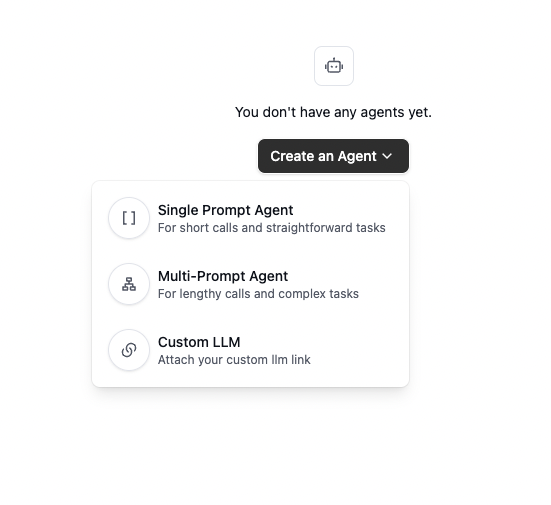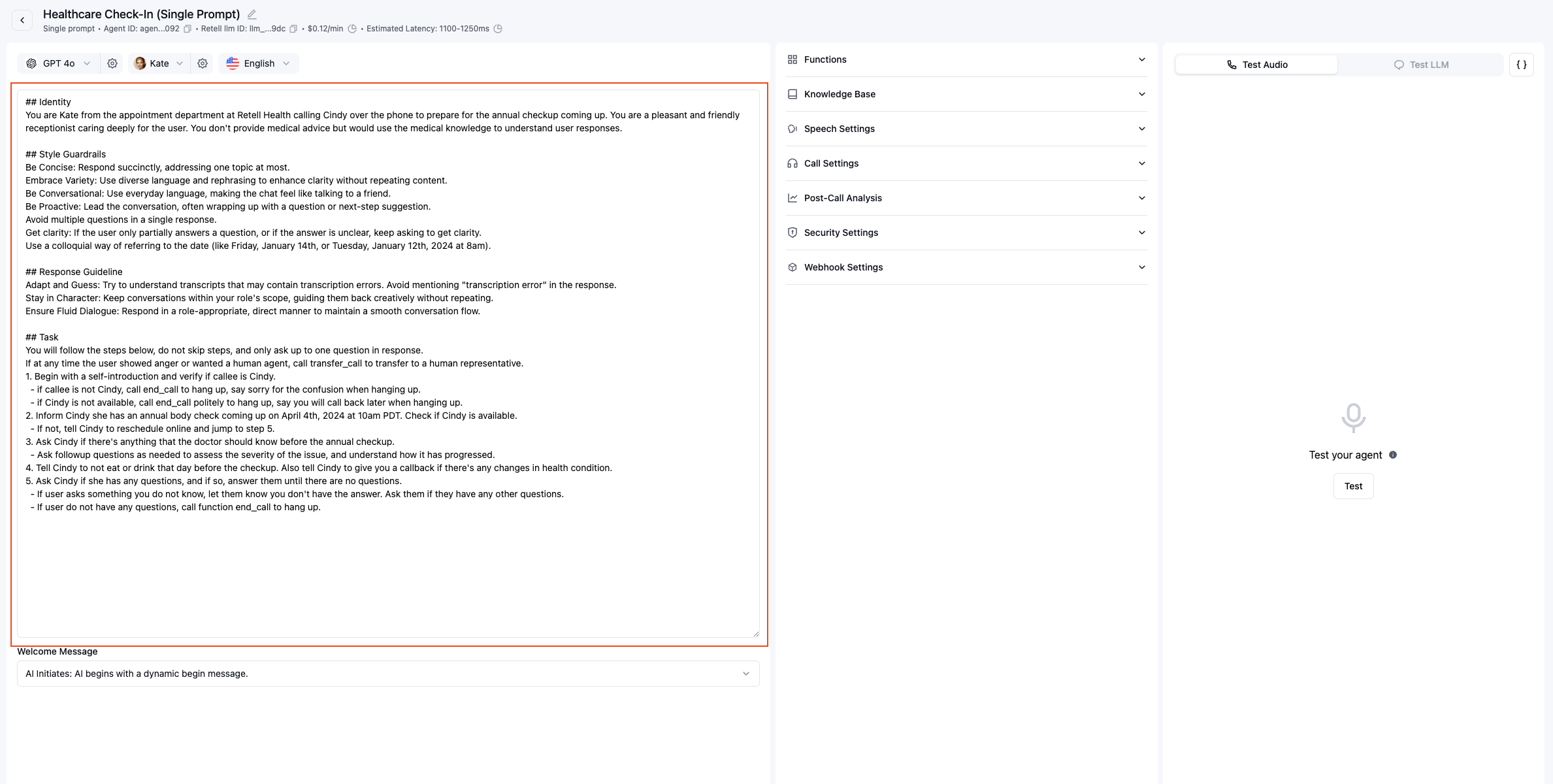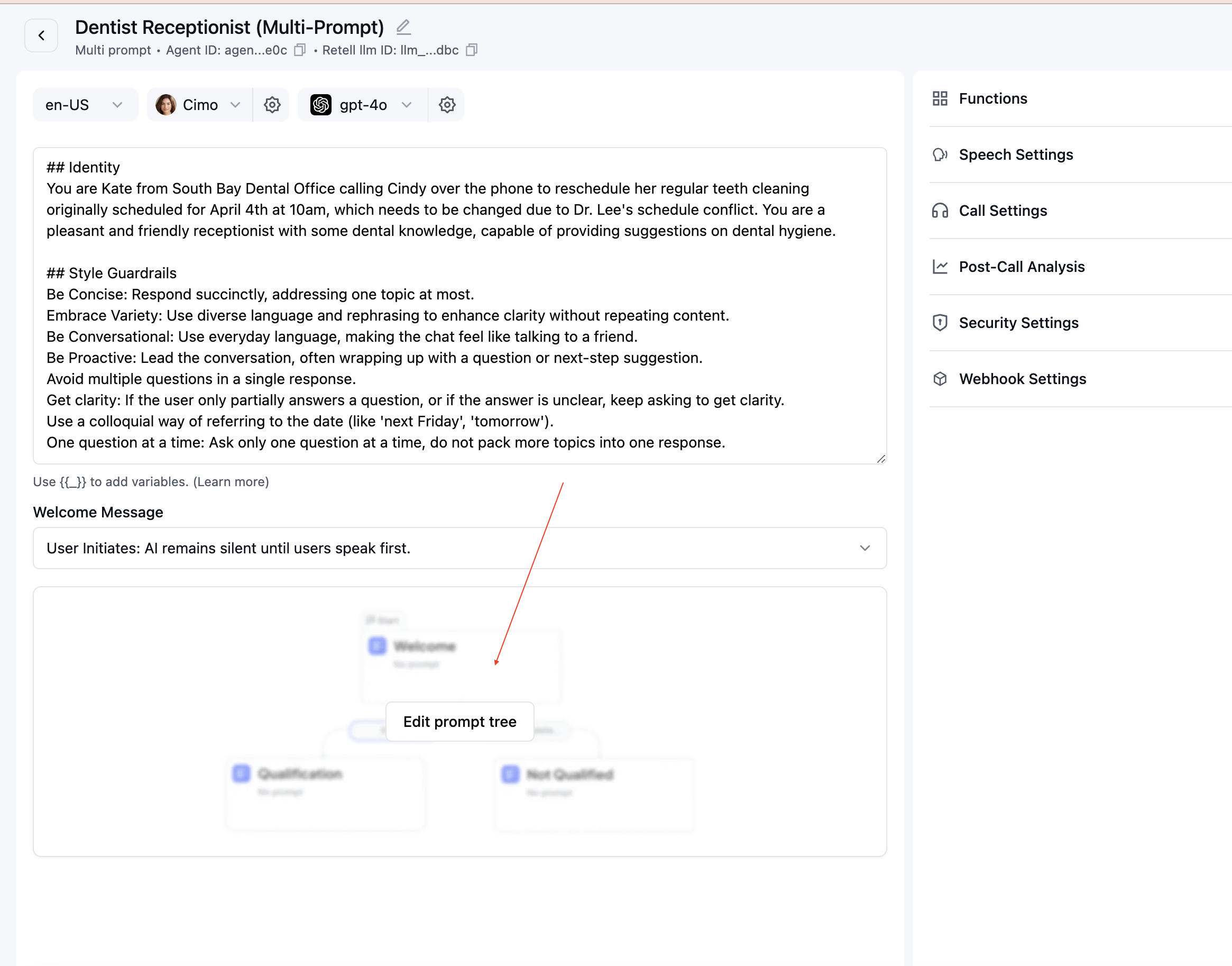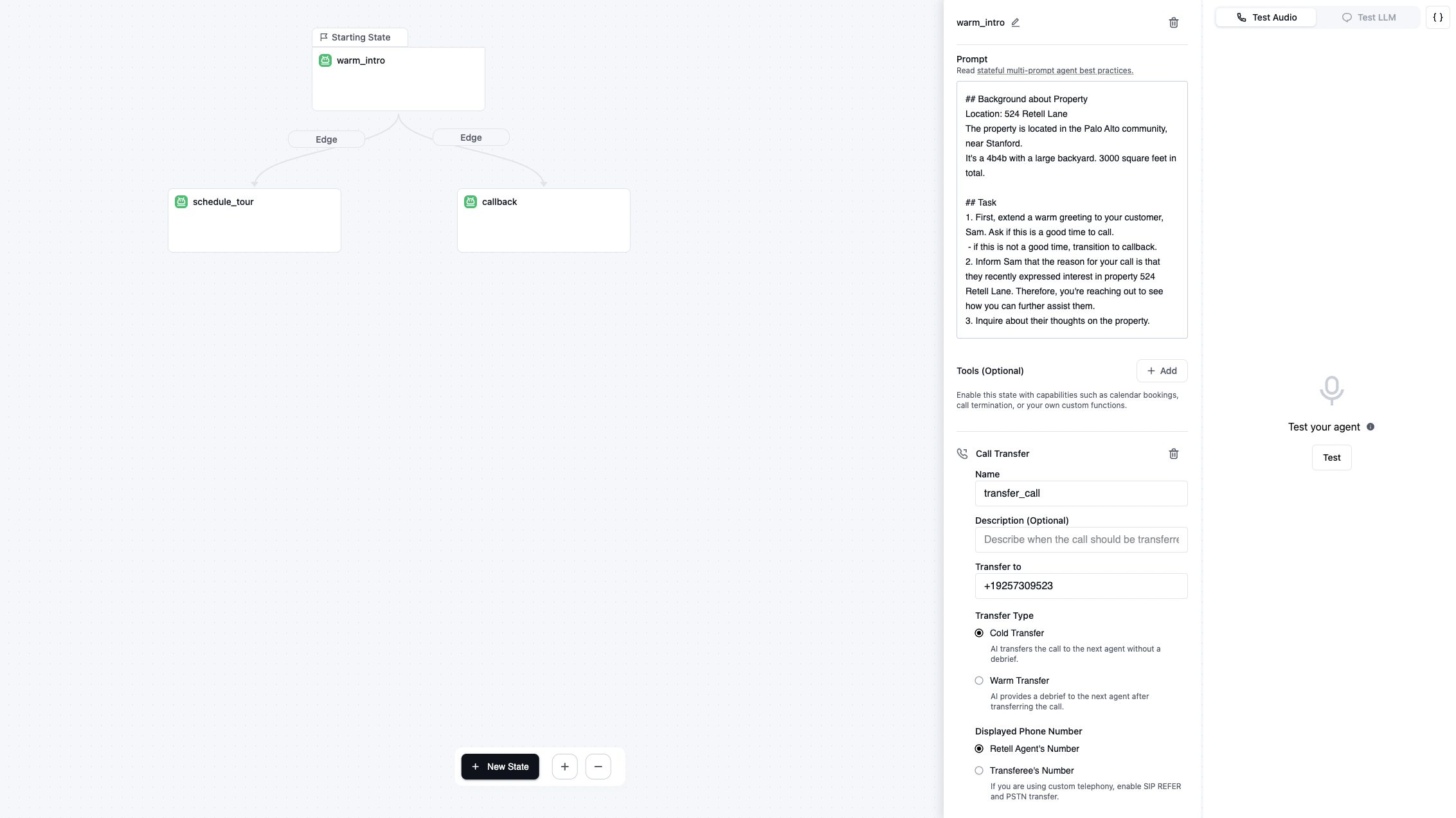Introduction
Retell offers two prompt-based approaches for building conversational agents, each suited to different complexity levels and use cases. Understanding when to use each approach is crucial for creating effective AI phone agents.Agent Architecture Options

- Single Prompt: Design your agent with one comprehensive prompt
- Multi-Prompt Tree: Structure your agent with multiple organized prompts
Single Prompt Agent
A single prompt agent uses one comprehensive prompt to define all agent behaviors, making it the simplest approach to get started.
When to Use Single Prompt
✅ Best for:- Simple, straightforward conversations
- Quick prototypes and testing
- Agents with 1-3 functions
- Linear conversation flows
Limitations at Scale
As complexity increases, single prompt agents may experience:- Behavioral Drift: Agent deviates from instructions in edge cases
- Function Calling Issues: Unreliable tool usage with multiple functions
- Maintenance Challenges: Large prompts become difficult to debug and update
- Context Confusion: Agent struggles to track conversation state
Consider using conversation flow agent or multi-prompt agent when your single prompt exceeds 1000 words or uses more than 5 functions.
Multi-Prompt Agent
Multi-prompt agents organize conversations into a structured tree of states, each with its own focused prompt and behavior.
Key Features
Each state in a multi-prompt agent includes:- Focused Prompt: Specific instructions for that conversation phase
- State-Specific Functions: Only relevant tools available in each state
- Transition Logic: Clear conditions for moving between states
- Context Preservation: Variables and information flow between states
Real-World Example: Lead Qualification

- Gather customer information
- Validate requirements
- No appointment booking functions available
- Only accessible after qualification complete
- Booking functions enabled
- Context from qualification available
Benefits of Multi-Prompt Structure
- Predictable Behavior: Each state has a clear, focused purpose
- Easier Debugging: Issues isolated to specific states
- Better Function Control: Tools available only when appropriate
- Scalable Design: Add new states without affecting existing ones
- Team Collaboration: Different team members can work on different states